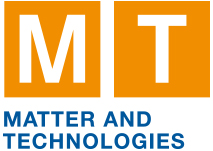Speaker
Description
Material and device development crucially depend on in-depth characterization of the electronic and chemical properties of the involved materials and their interfaces. Traditionally, (soft) x-ray spectros-copy techniques are very powerful and well-established tools for probing the electronic and chemical structure. Many instrumental advances have been achieved over the last decades, mostly focusing on high-resolution (and thus unavoidably low-transmission) instruments, which are particularly important for fundamental studies of well-defined systems. In contrast, the investigation of real-world devices requires highly sensitive (high-transmission) probes that are able to measure trace elements, minimize the x-ray dose to prevent beam-induced changes, and are ideally also applicable in an in situ/operando environment. Here, the key questions concern the chemical bonding present in the materials and how they react to changes in processing or operating conditions, making speed and sensitivity more relevant than ultimate energy resolution. In our efforts at KIT, we focus on developing x-ray spectroscopy techniques and the necessary experimental setups for this type of application, which has led to the de-velopment of the SALSA (Solid and Liquid Spectroscopic Analysis) experimental station, novel soft x-ray spectrometer concepts, as well as the X-SPEC beamline and its endstations at the KIT Light Source.
This presentation discusses the experimental setups, the methodological advances they enable, and the recent development of x-ray spectroscopy tools, in particular soft x-ray emission spectroscopy (XES) and resonant inelastic (soft) x-ray scattering (RIXS), for applied materials research. Through deliberate optimization of the parameters and controls of undulator light source, monochromators, focusing op-tics, as well as novel x-ray spectrometer designs, a unique detection system for XES and RIXS has been realized. This detection system enables rapid collection of XES and RIXS (in rapid RIXS maps) with a performance improvement of roughly one order of magnitude compared to previous systems.
| Speed talk: | Normal speed talk selection |
|---|

